奥迪宅,上海,中国
2017-10-20王子耕,MilenaLazzaretti
奥迪宅,上海,中国
Audi Haus, Shanghai, China, 2011
评论
王子耕:“奥迪宅”的命名以及对立面进行四坡削切的处理方式,都直接指向一种将展台拟物(房子)化的意图,即建筑师张永和将命题引导向要为一台车建立一种恰当的围护关系。这种关系在平面中最简化为矩形围合,却在立面中借由玻璃材料的特性和排布方式展现出前所未有的戏剧性和模糊状态。
关于材料性的探讨在非常建筑的实践中是一以贯之的,它常常可以将常规建筑语汇在不改变原型的基础上陌生化,进而带来空间和概念上的颠覆,特别是玻璃这种同时具备“隔离”和“消失”属性的材料。无论是垂直玻璃宅中对于建筑垂直向度上的透明性的戏剧化呈现,还是康明斯亚洲总部项目中通过玻璃隔断透明性的颠倒,进行的垂直密度实验,都是针对玻璃二元性属性的应用。而在奥迪宅中,关于玻璃的实验更进一步,玻璃的属性不再只具备透明性,不再非此即彼。透明玻璃不再意味着“消失”,玻璃对主体的二维投射和主体并置在一起。建筑师借助玻璃的反射和折射属性极具表现性地展现出静止物(汽车)的动态。有意思的是,与表现运动的多重曝光摄影或是杜尚在《下楼的裸女》中的动态主体(人物)不同形态的瞬间叠加的呈现方式所不同,汽车的运动方式实际上不存在瞬间与瞬间之间的差别,也就是说,静态主体(汽车)与其自身借助层层玻璃形成的像,共同在人的认知经验中产生出了时间体验上的欺骗性和类似电影似动(apparent movement)现象的运动错觉。
这种视觉错觉的形成在于“层”的概念的应用,这也是除了材料性之外,我们可以观察到的非常建筑实践中另一项重要的概念和方法上的延续。早在2008年意大利都灵的装置作品“YOU prison”中,张永和使用平行的阳光板将人的身体“囚禁”在一个建筑界限内,而奥迪宅同样可以理解为将展览主体(汽车)“囚禁”在层切的玻璃切片中的视觉装置。非常建筑在玻璃的平面布局上突破了以往对“层”的平行排列,选择了以矩形端点进行发散的布局方式。在其公开的5种平面可能性中,这种布局方式既能使反射和折射产生图像衰减和形变,强化运动错觉,同时也能顾及到不同视点下的视觉体验差别,并保证观赏不被聚集的玻璃截面所遮挡。与垂直玻璃宅中设备管道的内向露明相反,为了强化玻璃作为视幻装置的纯粹性,构造节点被隐藏在基座中,三角门的做法同样避免了连接件的使用。基座面层镜面钢板的光反射和预埋照明亦在夜晚营造出亦真亦幻的视觉氛围。
奥迪宅提供了一种具备方法的设计过程,并在很多层面继承了张永和对物质性和形式操作的思考,更少有地拓展了玻璃在建筑概念中的二元性,恰如其分地将材料的反射性和折射属性应用在针对运动的表达中。
Comment
WANG Zigeng:The name "Audi Haus" and its way of dealing with hip edges in elevation are an explicit attempt to analogize the display platform with an object (a house). In fact, the very proposition,chosen by the architect Yung Ho Chang, hints at an appropriate relationship encompassing the car on display. If this relationship, in terms of the plan,can be reduced to a simple rectangular enclosure,in elevation, however, it exploits properties and distribution of glass in space in order to convey a sense of theatricality and indefiniteness as never seen before.
Among FCJZ practices, re-discussion and investigation of materiality is a constant approach,FCJZ usually makes the conventional architectural language unrecognizable while leaving their original shape untouched, completely reversing the relationship between concept and space. This is especially true when working with glass, a material that shows both "dividing"and "disappearing" properties. Theatrical realizations of transparency in architectural vertical direction, or of experimentations with vertical density subverting glass partitions' transparency as seen in Cummins Inc.Asian division's projects, you will see that these are all applications of glass's bi-dimensional properties.
However, in Audi Haus, experimentation with glass is taken a step further: glass properties are not limited to its transparency, and no longer irreconcilable. Transparent glass does no longer mean disappearance: on the contrary, glass exists together with the subject's bi-dimensional ref l ection,symbiotically juxtaposed to it. The architect makes use of glass' reflecting and refracting properties to convey, in an expressive way, the dynamic state of a static object (the car). Compared to movement representation as seen in multi-exposure cameras'outtakes, or in Duchamp's Nude Descending a Staircase, where movement is conveyed through juxtaposition of single moments showing the dynamic body (the figure) in different positions, it is interesting to see that, in Audi Haus, the car is actually still, there is no difference in movement over time: the movement effect is created exploiting the array of glasses around the car, which, in the cognitive experience of the spectator, distorts the perception of time and creates an illusion which closely resembles apparent movement phenomena.
This optical illusion is conveyed through the application of the idea of "layers", and, besides the materiality, it also possible to observe certain continuity in concepts and methods in FCJZ practices. As early as 2008 in Turin, Italy, in the installation YOU prison,Yung Ho Chang's parallel solar panel imprisoned the human body inside an architectural space: similarly,Audi Haus can be understood as a visual installation of layered glass panels, where the body on display (the car)is imprisoned within. In distributing the glass surface,FCJZ moves beyond the past concept of layers as a parallel-ordered series of elements, choosing a structure distribution where dispersion takes place along the extremities of the rectangular shape. Among its 5 possible open surface types, this distribution not only allows reflection and refraction to de-amplify and distort the image, strengthening the sense of movement,but, at the same time, it also creates different visual effects from different viewpoints, while guaranteeing an enjoyable visual experience, not burden by an overcondensation of glass sections. If in Vertical Glass House pipelines are completely exposed, in Audi Haus, in order to strengthen the purity of glass as optic installation,structural joints are hidden inside the pavilion base,and a triangular door is used as to avoid the usage of connectors. At night, the laminated steel base surface,with its ref l ectors and built-in lighting, also contributes in creating this optic atmosphere where reality blurred into illusion and illusion blends into reality.
Audi Haus is an example of design process inherent of methodology, and in using multi-layered surfaces it bequeaths Yung Ho Chang's ideas on materialistic and formal interventions, expanding the limits of glass bi-dimensionality in architecture as rarely seen elsewhere, recreating movement by properly exploiting glass's reflective and refracting properties. (Translated by Milena Lazzaretti)

1
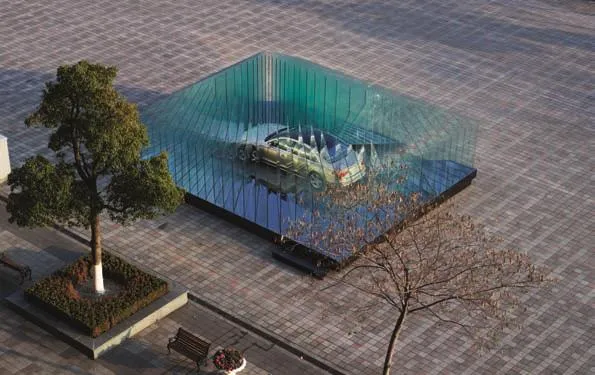
2
设计要求
展示一辆汽车。
材料+体验
在汽车展览会上人和汽车的角色会发生互换: 通常车动人静; 而在展览中,车静人动。奥迪展台的概念由此而生:运用玻璃折射与反射, 折射使汽车在每一片玻璃上呈现出不同的影像,静止的人可以在汽车连续影像的变化中体验动感;反射使每一片玻璃上都有多个非连续汽车影像叠加。与此同时,反射与折射又在相互叠加,当人开始移动,汽车便仿佛在无数的维度上行驶。在玻璃布局的探索过程中,我们最终选择了一个拥有两个反射立面与两个折射立面的设计,反射立面和折射立面可以提供两种截然不同的体验,而倾斜坡道可以引领观者进入展台内部,从而提供第三种观车的体验。□
Design Brief
To exhibit a car.
Materials + Experience
In auto shows, the roles humans and cars play are reversed; generally, cars move, and people remain still, but in auto shows, the car is still, and people move. The concept for Audi's exhibition pavilion is based on this idea. The pavilion uses glass to achieve refraction and reflection of light; refraction causes a different image of the car to appear on each panel of glass, hence a stationary audience would be able to experience a sense of motion from the changes in the continuous image of the vehicle. Reflection allows each glass panel to overlay multiple non-continuous images of the vehicle. At the same time, reflection and refraction are superimposed on one another;when a viewer begins to move, the car appears to be travelling in countless dimensions. In the process of exploring various glass layouts, we finally decided upon a design with two reflection surfaces and two refraction surfaces; the reflection surfaces and refraction surfaces provide two different experiences,and the ramp up to the platform guides viewers towards its interior, where they are provided with a third viewing experiences.□
项目信息/Credits and Data
客户/Client: 一汽大众汽车有限公司/FAW Volkswagen Automotive Co., Ltd.
基地位置/Location: 上海嘉定F1赛车场/Shanghai F1 Racing Circuit
建筑设计/Architets: 非常建筑/Atelier FCJZ
主持建筑师/Principal Architect: 张永和/Yung Ho Chang
设计团队/Design Team: 林方杰,刘靖,吴瑕/Kelvin Lim,LIU Jing, WU Xia
展台面积/Site Area: 80m2
建筑面积/Floor Area: 80m2
结构和材料/Structure and Material: 玻璃结构;玻璃,镀锌钢/Glass and galvanized steel
设计周期/Design Period: 2010.11-2011.10
建成时间/Completion Time: 2011.10
摄影/Photos: 舒赫/SHU He

3

4
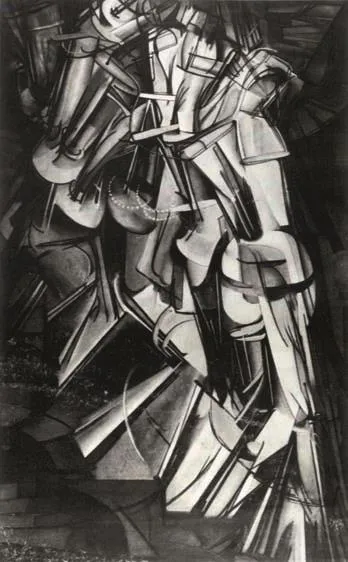
5

6
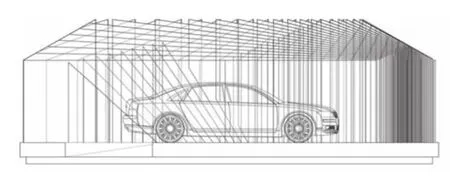
7
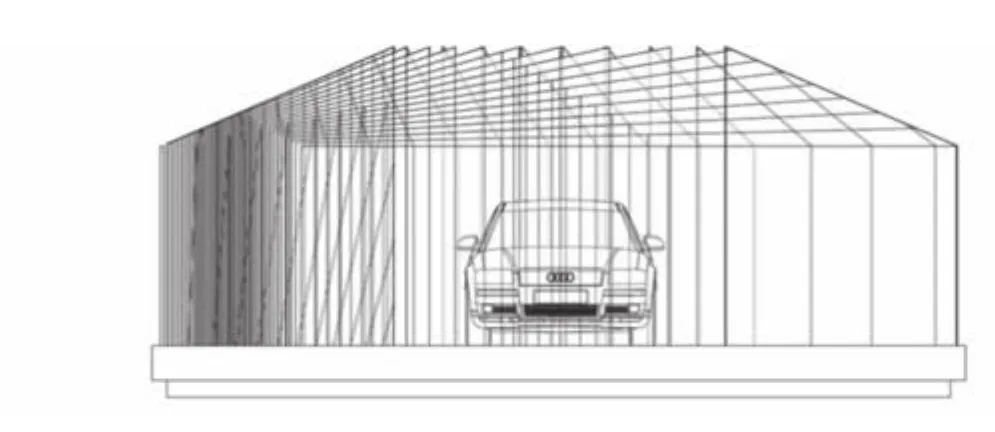
8
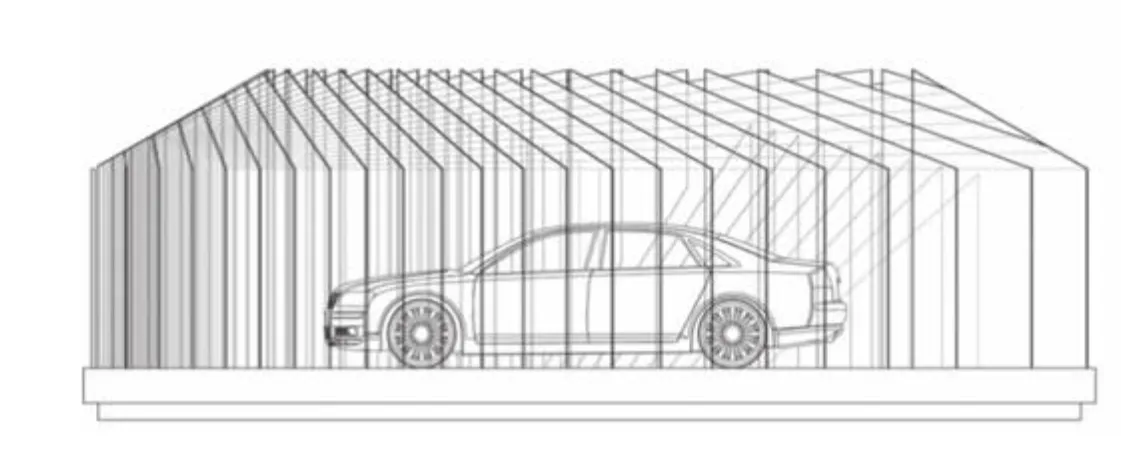
9

10

11

12

13

14
